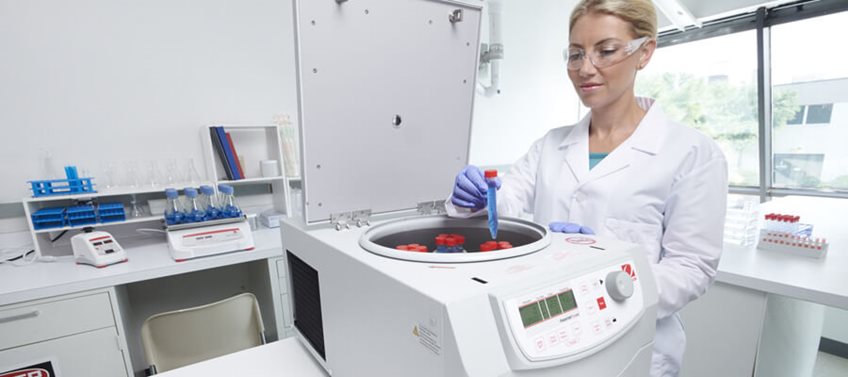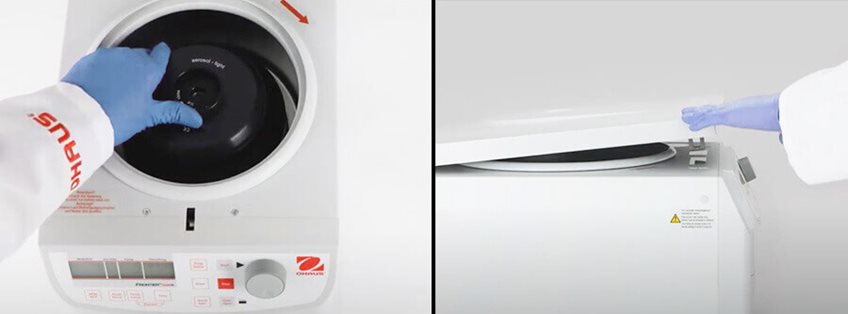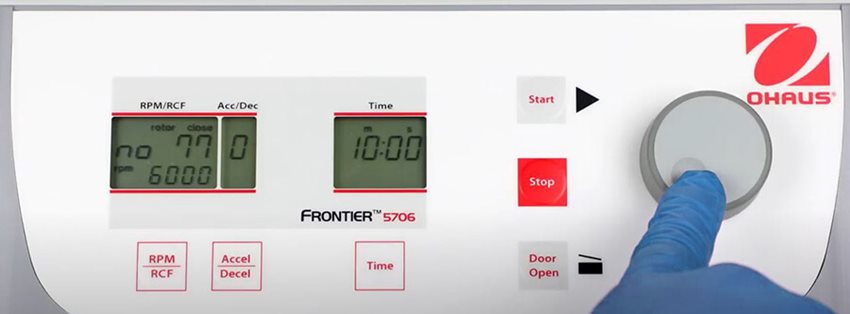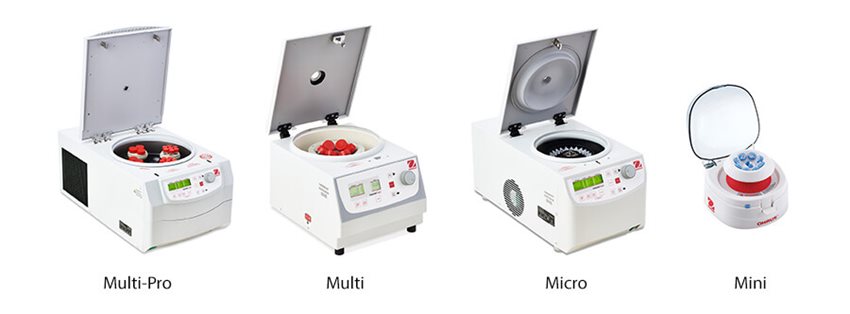
A high-speed centrifuge is a common sight in laboratories. They are essential for liquid and gas sample separation based on density. Scientists rely on them when studying cells, proteins, viruses, and more. However, there are concerns that necessitate both careful selection of a high-quality centrifuge and safety training to ensure an accident free laboratory.
If used improperly, centrifuges can pose safety risks because of the high centrifugal forces generated by the rotor during use. Improper installation of the rotor or sample imbalance can result in damaged equipment, ruined samples, and, at worst, serious injury. Sample container breakage is a very real concern as broken glass can cut or otherwise injure the operator, leaked liquids may cause burns or skin irritation and released aerosols can be harmful if inhaled.
Safety First
According to guidance issued by OSHA (Occupational Safety and Health Administration of the United States), the majority of all centrifuge accidents result from user error.
These tips from OHAUS will help to ensure safe operation.
Before operation:
• Make sure centrifuge bowls and tubes are dry and the spindle is clean.
• Do not overfill tubes or containers.
• Use safety cups/buckets to contain potential spills and prevent aerosol leakage.
• Ensure that the rotor is properly seated on the drive shaft.
• Make sure that tubes or containers are properly balanced in the rotor.
• Only check O-rings on the rotor if you are properly trained.
• Follow the manufacturer’s guidelines for maintenance and operation.

During operation:
• Never exceed the rotor’s maximum run speed.
• Keep the centrifuge lid closed during operation.
• Check that the centrifuge is operating normally before leaving the area.
• Do not open the lid until the rotor has come to a complete stop.
• If a spill occurs, use appropriate decontamination and clean-up procedures; use tweezers to remove broken glass.
 After operation:
After operation:
• Clean rotors and accessories using neutral cleaning solutions and a soft cloth.
• Do periodic visual inspections of rotors to check for residue and corrosion.
• Inspect the rotor for cracks or nicks and replace rotors that show any signs of wear or damage.
To ensure safe operation, reliability, and long life of your centrifuge it is essential to take proper care of the unit and rotors between usage. For maintenance tips, refer to the
OHAUS Centrifuge and Rotor Maintenance & Cleaning Guide.
Safe, Reliable Centrifuges from OHAUS
The
OHAUS Frontier™ series consists of
Multi Pro,
Multi,
Micro, and
Mini centrifuges to support your sample separation needs. Frontier series models cover a range of sizes and features to suit basic and advanced centrifugation applications.
To determine which model will best suit your needs, refer to the
OHAUS Frontier 5000 Rotor Guide. This will help you choose the right model and rotor package for all basic and advanced centrifugation applications.

All OHAUS Frontier centrifuges are designed for safe use and ease of operation with a range of smart features, including:
- German engineering and high-quality components to ensure reliable use.
- Chemical-resistant stainless steel for durability in the lab.
- Automatic rotor recognition
- Rotor imbalance sensor
- Splash-proof front panel
- Slip-free rubber feet for stability
- Maintenance-free induction motor
- Safety switches that immediately stop the rotors should the lid open during use
- Convenient controls and intuitive interface that allow for responsive operation while wearing gloves
- Available biocontainment rotors that enable work with hazardous samples.
Contact Us
To find the Frontier Centrifuge that suits your needs, visit ohaus.com/centrifuges or contact our sales team.